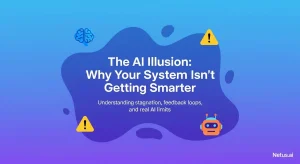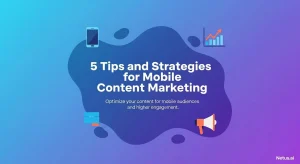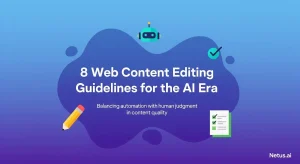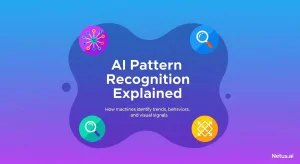Do Editors Use AI Detection Tools to Review a Writer's Novel? Exploring the Role of Technology in the Editing Process
Ashley Merit
Content writer and editor for Netus.AI
Table of Contents
Do Editors Use AI Detection Tools to Review a Writer’s Novel? Editors have long been an essential part of the publishing industry, working with authors to refine their manuscripts and ensure the final product is polished and ready for readers. However, with the rise of artificial intelligence (AI) technology, some editors are turning to AI detection tools to assist in their work.
AI detection tools can analyze a writer’s novel and provide insights on various aspects of the writing, such as grammar, syntax, and even the emotional impact of the story. These tools use algorithms to identify patterns and provide feedback to the editor, who can then use this information to guide their editing process.
While some editors are embracing the use of AI detection tools, others are more skeptical. They argue that these tools cannot replace the human touch and intuition that is necessary for effective editing. Nonetheless, the use of AI detection tools in the editing process is a topic of growing interest and debate in the publishing industry.
The Emergence of AI in Editing
Understanding AI and Its Capabilities
Artificial Intelligence (AI) is a branch of computer science that deals with the creation of intelligent machines that can perform tasks that typically require human intelligence. AI has the ability to learn, reason, and self-correct, making it a powerful tool in various fields, including editing.
AI tools can be used to detect errors in grammar, punctuation, and spelling, as well as identify inconsistencies in plot, character development, and tone. Some AI tools can even suggest revisions to improve the overall quality of a piece of writing.
One of the most significant capabilities of AI in editing is its ability to analyze large amounts of data quickly and accurately. This makes it possible for editors to review manuscripts more efficiently, saving time and increasing productivity.
Historical Development of AI Tools
AI tools for editing have been in development for several decades. In the 1990s, software programs like Grammatik and Microsoft Word’s grammar checker were introduced, which used rule-based systems to detect errors in writing.
In recent years, machine learning and language models have enabled AI tools to become even more sophisticated. Natural Language Processing (NLP) techniques have made it possible for AI tools to understand the context and meaning of words, allowing them to detect errors that rule-based systems would miss.
Today, there are numerous AI tools available for writers and editors, including Grammarly, ProWritingAid, and Hemingway Editor. These tools use a combination of rule-based and machine learning techniques to provide writers with suggestions for improving their writing.
As AI technology continues to evolve, it is likely that we will see even more advanced tools developed for editing and improving writing.
AI Detection Tools in Editorial Processes
How AI Detection Tools Work
AI detection tools use machine learning algorithms to analyze and identify potential issues in a manuscript. These tools can detect grammar and spelling mistakes, inconsistencies in plot or character development, and other common writing errors.
The algorithms used by these tools are constantly evolving, allowing them to adapt to new writing styles and trends. They can also learn from feedback and corrections made by human editors, improving their accuracy over time.
The Role of AI Editors in Manuscript Review
AI editors can assist human editors in the manuscript review process by highlighting potential issues and providing suggestions for improvement. However, they cannot replace human editors entirely. AI tools lack the nuanced understanding of language and context that human editors possess, and may miss important elements such as tone, voice, and style.
Human editors also provide valuable feedback and guidance to writers, helping them to improve their craft and develop their own unique voice. AI tools can supplement this process, but they cannot replicate the personal touch and expertise of a human editor.
AI and Human Writers: A Comparative Analysis
While AI detection tools can help identify and correct common writing errors, they cannot replace the creativity and originality of human writers. AI tools lack the ability to generate new ideas or develop unique characters and storylines.
Human writers also bring their own perspective and experiences to their writing, creating stories that are influenced by their own unique backgrounds and beliefs. AI tools cannot replicate this level of personal connection and authenticity.
In conclusion, AI detection tools can be a valuable tool in the editorial process, but they cannot replace the expertise and personal touch of human editors and writers. By working together, AI tools and human editors can help writers to improve their craft and produce high-quality manuscripts.
Impact on Authors and the Writing Industry
Influence on Authorship and Creativity
The use of AI detection tools in the writing industry has raised concerns about the impact on authorship and creativity. Some argue that these tools may stifle creativity by limiting the writer’s ability to express themselves freely. They may also lead to a homogenization of writing styles, as authors are encouraged to conform to certain standards set by the AI tools.
However, others argue that these tools can actually enhance creativity by providing writers with new insights and ideas. AI tools can analyze vast amounts of data and identify patterns that humans may not be able to detect. This can help writers to develop more nuanced characters, plotlines, and settings.
AI Tools as Writing Assistants
AI detection tools are increasingly being used as writing assistants. These tools can help writers to identify common errors, such as grammar and spelling mistakes, and suggest improvements to sentence structure and word choice. They can also provide feedback on the overall structure and coherence of a piece of writing.
While some writers may feel that the use of these tools takes away from the craft of writing, others see them as valuable tools that can help to streamline the editing process and improve the overall quality of their work.
The Debate on AI-Generated Text and Copyright
One of the most controversial aspects of AI detection tools is their ability to generate text. Some AI tools are capable of producing entire articles, stories, and even novels. This has raised concerns about copyright infringement and the potential for AI-generated text to replace human writers.
While AI-generated text may be useful for certain applications, such as generating news articles or product descriptions, many argue that it can never truly replace the creativity and originality of human writers. As such, there is an ongoing debate about the role of AI-generated text in the writing industry and the potential impact on copyright law.
Technical Aspects of AI in Writing
AI and Language Structure
Artificial Intelligence (AI) is revolutionizing the way writers create content. AI writing tools use natural language processing algorithms to analyze and understand the structure of language. This allows them to identify the grammatical and semantic patterns in a text. By analyzing the language structure, AI tools can identify areas of improvement in a writer’s work, such as sentence complexity, word choice, and tone.
Fine-Tuning AI for Fiction and Nonfiction
AI writing tools can be fine-tuned to suit different writing styles, including fiction and nonfiction. For example, AI tools can be trained to recognize the different types of characters in a novel and to suggest changes to their dialogue or actions. This can help writers to create more compelling and realistic characters. Similarly, AI tools can be trained to recognize the different types of nonfiction writing, such as academic papers or news articles, and to suggest changes to the tone and language used in these texts.
Database and Memory: The Backbone of AI Writing
AI writing tools rely on vast databases and memory banks to analyze and understand language. These databases contain vast amounts of information on grammar, syntax, and language structure. By analyzing this information, AI tools can make intelligent suggestions for improvements to a writer’s work. The memory banks used by AI writing tools allow them to learn and adapt to new writing styles over time. This means that the more a writer uses an AI tool, the more personalized and accurate its suggestions become.
In conclusion, AI writing tools are revolutionizing the way writers create content. By analyzing language structure, fine-tuning to different writing styles, and relying on vast databases and memory banks, AI tools can help writers to create more compelling and engaging content.
Practical Applications and Case Studies
Publishers Utilizing AI for Editing
Publishers are increasingly turning to AI tools to streamline the editing process and improve the quality of the final product. AI writing programs, such as Grammarly and ProWritingAid, are being used by publishers to check for spelling and grammar errors, as well as to suggest improvements in sentence structure and word choice. These tools are able to detect errors that may be missed by human editors, and can significantly reduce the time and cost associated with the editing process.
Success Stories of AI in Writing Bestsellers
Several best-selling novels have been written with the help of AI writing tools. For example, “The Day A Computer Writes A Novel,” a novel written by an AI program developed by a team of researchers at the Future University Hakodate in Japan, made it to the top 10 of a Japanese literary prize. Similarly, “1 the Road,” a novel co-written by an AI program and a human author, was published in 2019 and received positive reviews from critics.
Case Study: AI Tools in Academic Research
AI writing tools are also being used in academic research to help researchers write papers and reports. One example is the GPT-3 language model, which has been used to generate summaries of scientific papers and to help researchers write introductions and conclusions. These tools can help researchers save time and improve the quality of their writing, allowing them to focus on other aspects of their research.
In conclusion, AI writing tools are being used in a variety of practical applications, from streamlining the editing process for publishers to helping researchers write papers and reports. While these tools cannot replace human editors and writers, they can significantly improve the quality of the final product and reduce the time and cost associated with the writing process.

The shortcomings of content generated by AI | NetusAI
Discover why fast, high-volume AI content often fails to deliver real results. Learn about the crucial missing feedback loop and how implementing performance tracking can transform your AI content strategy.

The illusion of AI: Your system's intelligence gap | NetusAI
Stop wasting marketing spend! Most AI tools don’t learn from results, causing content stagnation and low engagement. Discover why your generative AI isn’t getting smarter and what system actually learns and optimizes content.

Plagiarism and copyright infringement | NetusAI
Learn the distinct differences between plagiarism and copyright infringement. Understand the ethical and legal implications and get practical strategies for avoiding both academic and creative work with NetusAI.

Tips and strategies for mobile content marketing | NetusAI
Optimized for mobile-first indexing, learn 5 essential strategies to capture attention, enhance engagement and drive leads and sales with your mobile content marketing.

Web content editing guidelines for the AI era | NetusAI
Review web content editing guidelines for the AI era. Learn how to edit AI-generated content, ensure authenticity and optimize for SEO and readability.

Explaining AI pattern recognition | NetusAI
AI pattern recognition enables machines to identify trends for diverse applications, from detecting plagiarism to fraud. Discover its processes, models and real-world benefits.

